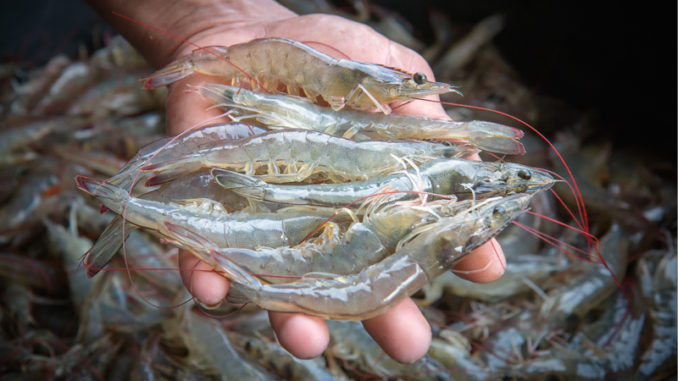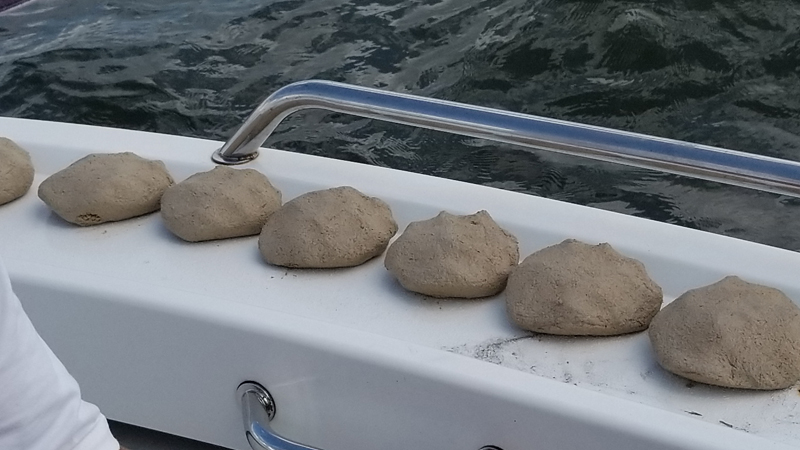
Did Hurricane Dorian disrupt the shrimp?
Lost in all the hoopla that comes with a major hurricane thrashing the coast of South Carolina is that today (Sept. 6) at noon is the beginning of the 2019 shrimp baiting season. Many sportsman look forward to this tradition for many reasons.
And if you’ve never been “shrimpin” before, it’s as good a time as any to start. It’s a fun way to spend time on the water, and you can certainly catch your share of shrimp. The concept is pretty simple, but throwing a cast net all day can be tiresome. Driving the boat also has its challenges. But these are minor compared to the rewards.
The basic tools are shrimping poles, bait balls, and a cast net. Click here to get your shrimp baiting license.
The poles mark your bait field to help you keep track of where you’ve placed your bait. The bait balls — or patties as some prefer — can be made of clay mixed with fish meal or commercially made baits. Either way, shrimpers form them into balls or patties, then toss them in between their poles. Each licensed shrimper is allowed 10 poles that can cover a maximum of 100 yards.
“Some people like to find sandy bottom, some like to find muddy bottom. I think you can find shrimp in either. My preference is a muddy bottom just because that’s what I’ve had the most success in. I have a lot of spots saved on my GPS. But when looking for new spots, I like to scout at low tide. Otherwise, I just pull up to a spot that looks good and I’ll stick one of my shrimp poles down to see what the bottom is like,” said Jamie Bateman of Sumter, who does most of his shrimping around Edisto Beach.

Bait balls roll, but patties stay put
Bateman prefers the patty approach when making his bait, which he creates from fish meal and clay.
“If you make them into balls, they can roll before they begin to disperse. So the shrimp will gather away from your poles. The patties stay in place,” he said.
He prefers to start shrimping on the falling tide. But he doesn’t mind doing it on the rising tide. He doesn’t like shrimping at slack tide.
“When you start on the falling tide, just make sure you don’t get left high and dry. I’ve seen other people leave poles behind because the tide dropped on them. And I’ve seen poles go completely under water when folks start on the rising tide and lose track of time. It’s easier to happen that you’d think,” he said.

With his bait patties formed, Bateman tosses one out at each pole. When he gets to the last pole, he goes back to the first pole and begins throwing his cast net. And he said when it comes to cast nets, bigger isn’t always better.
“You want to throw a net that you can get to fully open. If all you can throw consistently is a 3-foot net, that beats an 8-foot net that you can’t get to open fully. And that 8-footer will wear you out long before your cooler is full if you can’t get it to open up fully,” he said.
Go down the line, then start over
Once he’s made a cast at the 10th pole, he goes back to the first pole and starts over.
“I usually make a couple of passes, then I’ll toss more bait patties out, then do a couple of more passes,” he said.
Bateman likes taking home a cooler full of shrimp, but he said shrimp baiting is about more than that.
“It’s a fun tradition. And it’s pretty unique. Not every state has a shrimp baiting season. We listen to college football on the radio while we shrimp. It’s a good way to spend some time on the water with friends and family. Some years, the shrimp are small. Some year’s they’re bigger. But they always taste good, and catching them this way is just a lot of fun,” he said.
The shrimp baiting season runs through noon on Nov. 5 and the daily limit per boat is a full 48-quart cooler of whole shrimp, or 29 quarts of headed shrimp. Click here for full regulations from SCDNR.
Boiled or fried? Either way is good, but click here for a unique shrimp recipe that doesn’t involve either.


Be the first to comment